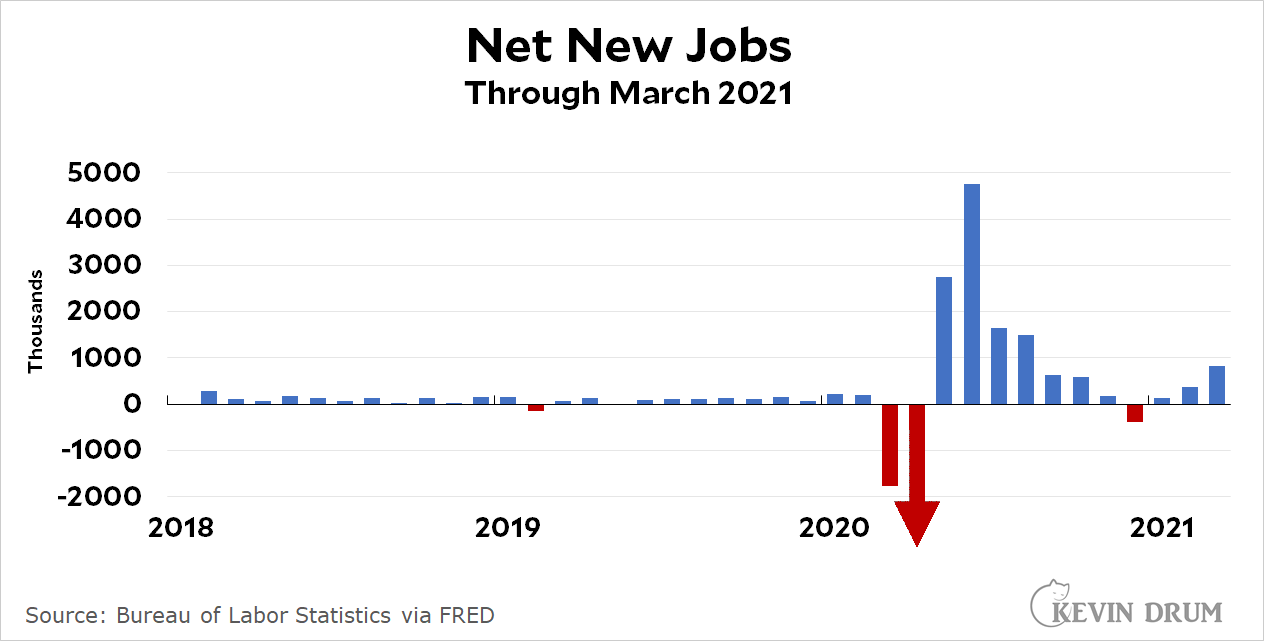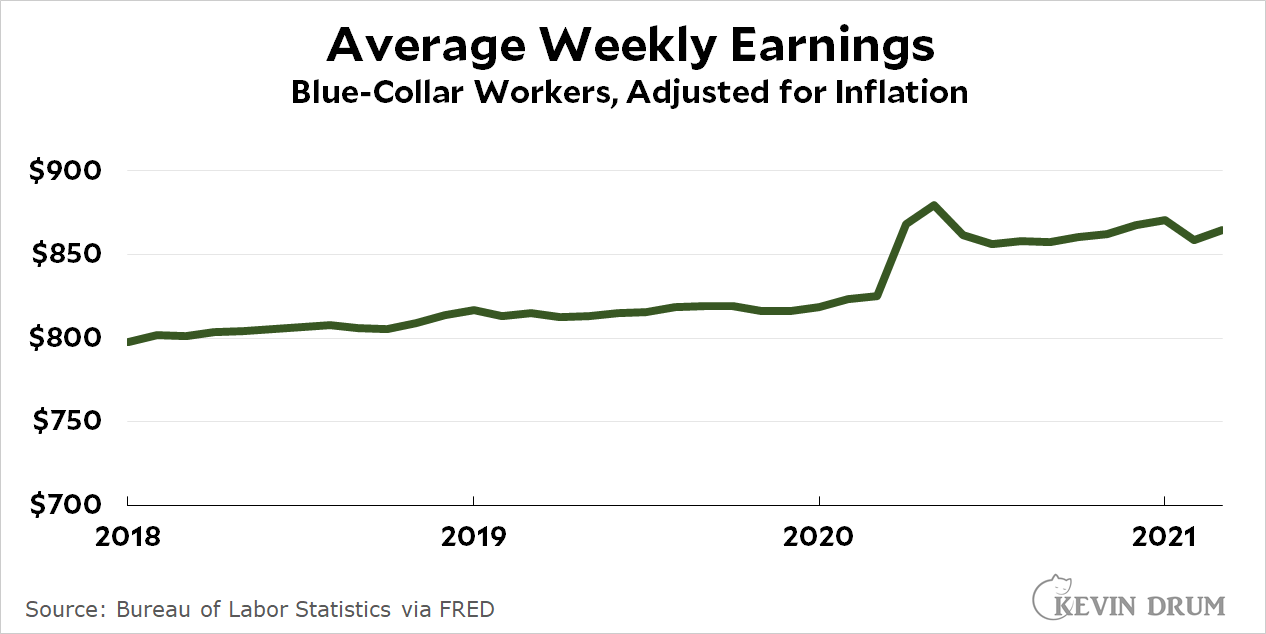The American economy gained 916,000 jobs last month. The unemployment rate declined slightly to 6.0 percent.

As usual, this is more a reflection of the pandemic than it is about the underlying strength of the economy, but for the first time in a while I'd say it represents genuinely good news. The increase in jobs is significant enough that it suggests the economy is now truly starting to recover. Unsurprisingly, the job gains were led by leisure and hospitality as people started taking vacations again.
(But it's not unambiguous good news. It's great that people are going back to work, but it might have been better if we had put this off for another month or so.)
Adjusted for inflation, average weekly earnings are up 5.5% since last March. As you can see, people who kept their jobs during the pandemic saw a sharp increase in earnings, and so far they've managed to hold onto them.


It would be really interesting to compare what has happened in the US with respect to jobs gained and lost with the other countries, most in Asia (but including the Anglo-Saxon countries Australia and New Zealand), which kept the coronavirus down with effective lockdowns, testing and tracing. Did they lose far more jobs initially because of those measures and/or have they gained a lot more because they have been able to open up earlier?
This would probably take more than a day, so it may be something that most journalists and bloggers can't or won't do, but maybe there will be some academic or government studies out before long.
"people who kept their jobs during the pandemic saw a sharp increase in earnings, and so far they've managed to hold onto them."
This is not what actually happened for the most part. The *average* for blue-collar workers - also for all workers - went up mostly because so many of the lowest-earning lost their jobs. Although some people did get (mostly temporary) pandemic bonuses, most people's actual earnings did not increase. This is counting job earnings, not unemployment benefits. The overall prospect for real wage increase is still poor, as it has been for the last 50 years. This may change if and when there is major government spending on things that might increase demand for labor, and if such demand is not allowed to be filled with outsourcing or immigration.
Well much, perhaps even most of them, but your chart does show a drop from the peak.
Kevin,
Two issues with the post:
1. US lost around 20 million jobs in April 2020; not 2 million shown in the chart.
2. As skeptonomist pointed out, it is not true that ""people who kept their jobs during the pandemic saw a sharp increase in earnings, and so far they've managed to hold onto them." What we have is a fine illustration of Simpson's paradox wherein both the lower and higher paid blue-collar workers' earnings can fall but the average earnings of the whole group can seem to rise due to the lower paid workers losing jobs at a higher rate. (I believe you have pointed to this effect in relation to NAEP score of black students and white students both rising, while the average of their combined groups seem to fall).
Hope you'll correct these problems.
Enjoying your new blog,
Abe